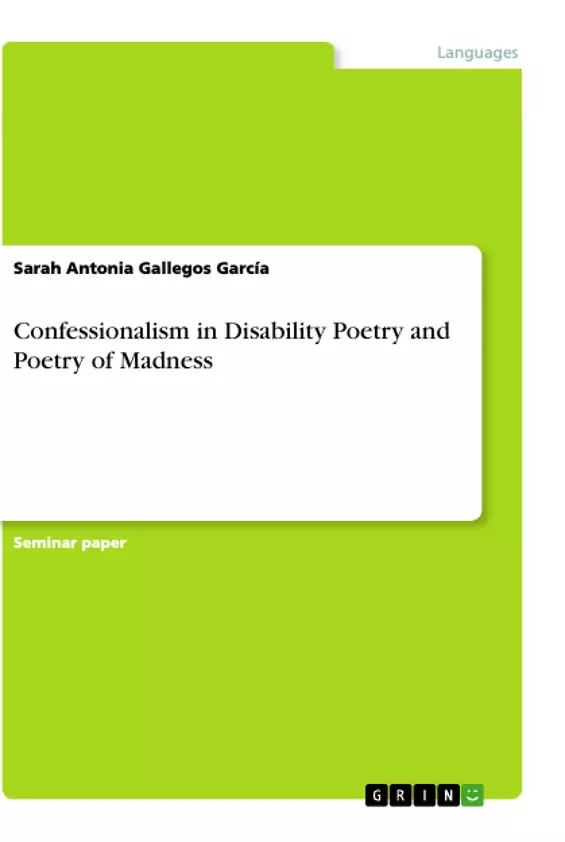There has always been a strong connection between the disabled, the depressed, criminals and the sexually differently oriented in literature. It would therefore be interesting to prove that the disability poem by Sheila Black, "What You Mourn", and the poem dealing with madness by Anne Sexton, "Her Kind", consult Confessionalism.
It will also be considered which stylistic devices are used to express parts of their purportedly real life. A comparison will try to establish whether differences between the two poems regarding Confessionalism exist and how they could be explained.
The term "disability" has only existed, since the definition of the "norm" has been established. This definition became popular in 1855, containing the idea of a perfect, godlike and ideal body, which fits the physical average. With the popularization of statistics in the 1830s, examinations of the human body increased, assuming that a body is only norma, if it does not fall victim to the extremes of a bell curve.
Since such a definition of the norm has arisen, the concept of the disabled body has been created. All extremes were perceived as disadvantages and rejected, and therefore, disabled people, alcoholics, depressed or homosexuals were considered abnormal. Since all of them showed in some way an abnormality, they were simply regarded as "the disease of the nation".
This was mainly the idea of the so called "eugenics", a theoretical concept which aims to reduce negative hereditary factors.
Therefore, for a very long time, disability was treated as a taboo subject. Although it was mentioned in novels, in the end, the disability would always be gotten rid of because it implied imperfection. This changed through the emergence of the so called Confessionalism.
Inhaltsverzeichnis (Table of Contents)
- Introduction
- Confessionalism
- A Comparison of Confessionalism in Poetry
- in "What You Mourn" by Sheila Black
- in "Her Kind" by Anne Sexton
- Conclusion
Zielsetzung und Themenschwerpunkte (Objectives and Key Themes)
This work aims to examine the use of confessionalism in both disability poetry and poetry of madness. It compares and contrasts the techniques and themes employed by Sheila Black in her poem "What You Mourn" and Anne Sexton in her poem "Her Kind" to understand the distinct ways in which each poet tackles their respective subjects.
- The evolution of confessionalism as a poetic form.
- The use of confessionalism to address taboo subjects like disability and mental illness.
- The interplay of truth and fiction in confessional poetry.
- The impact of confessionalism on the relationship between the poet and the reader.
- The stylistic devices used to convey personal experiences in confessional poetry.
Zusammenfassung der Kapitel (Chapter Summaries)
- Introduction: This chapter introduces the concept of confessionalism and its historical context. It highlights the emergence of confessionalism as a response to societal taboos and the need for personal expression. The chapter also provides a brief overview of the changing perception of disability and its portrayal in literature.
- A Comparison of Confessionalism in Poetry: This section delves into the analysis of confessionalism in the two poems. It examines the stylistic choices, themes, and narrative elements employed by Sheila Black and Anne Sexton to convey their personal experiences with disability and madness. The chapter explores how these poems challenge societal norms and offer a glimpse into the realities of lived experiences often marginalized and silenced.
Schlüsselwörter (Keywords)
This work focuses on the key themes of confessionalism, disability poetry, poetry of madness, personal expression, taboo subjects, stylistic devices, truth and fiction, intimacy, reader-poet relationship, and the representation of marginalized experiences in literature.
- Citation du texte
- Sarah Antonia Gallegos García (Auteur), 2014, Confessionalism in Disability Poetry and Poetry of Madness, Munich, GRIN Verlag, https://www.grin.com/document/499089



